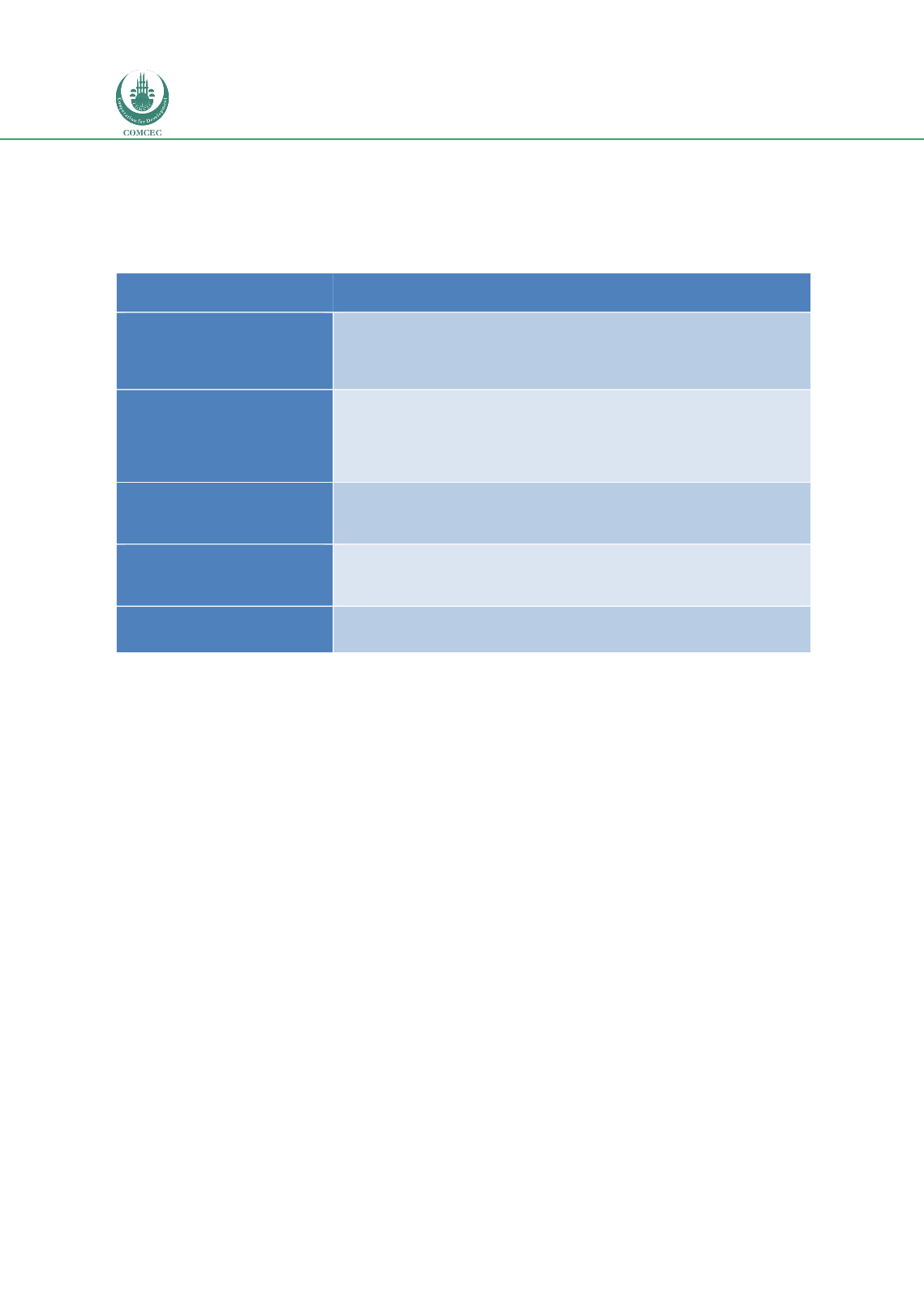

Reducing Postharvest Losses
In the OIC Member Countries
122
4.6.3.
Causes of Postharvest Losses
Causes of postharvest losses are summarised i
n Table.The cause of loss occur at all stages in
the value chain.
Table 56: Causes of losses in the Ugandan dairy value chain
Stage in the value chain
Causes of loss
Milking
Inappropriate equipment and milking methods (e.g. unhygienic practices)
Animal diseases affecting milk yields (e.g. mastitis)
Adulteration of milk with water and chemicals such as hydrogen peroxide or
caustic soda
Lack of storage and cooling facilities at farm level
Milk Collection Centres
Operation of cooling centres fraught by challenges such as high cost of equipment
or irregular power supply;
Collection of chilled milk (e.g. during rainy season, or if distances are long)
During rainy season a relatively large proportion of milk is sent back to farmers
due to souring
Lack of sufficient quality assurance
Processing
Difficulties to collect milk from dispersed small-holder farmers
Disruption of cold chain (e.g. due to power cuts)
SME processors face challenges such as capacity, infrastructure, etc.
Lack of quality sufficient assurance
Marketing
Lack of means of preservation
Lack of appropriate transport
Large proportion of milk is marketed through informal channels, where milk is
sometimes adulterated and sold un-pasteurized.
Consumption
Spoilage of milk due to lack of preservation methods
Health risks due to unhygienic processing and storage of milk
Lack of consumer awareness
4.6.4.
Measures and Strategies Implemented for Postharvest Loss Reduction
According to Balikowa (2011), since the secretariat of the (Dairy Development Authority) DDA
started operations in 2000, many reforms in the handling and marketing of milk have been
implemented including, amongst others:
Code of hygienic practice for milk & milk products was developed in collaboration
between DDA and Uganda National Bureau of Standards (UNBS).
Organization of the informal sector. Milk traders were mobilized through their
umbrella body, the Uganda National Dairy Traders Associations (UNDATA) to
undertake small-scale milk pasteurization using locally fabricated batch pasteurizers
and to market loose pasteurized milk.
Boiling of large volumes of milk in unhygienic environments was outlawed.
Use of plastic containers, particularly jerry cans for transporting milk was outlawed.
Milk traders were advised to acquire aluminium or stainless milk cans which they
purchased in large numbers.
Regular inspection and monitoring of milk processing facilities and retail outlets by
DDA was intensified.
Registration of milk processors, traders, transporters, importers and input suppliers
was initiated.
Widespread training of dairy farmers and milk traders on hygienic milk production
and handling was carried out.
















